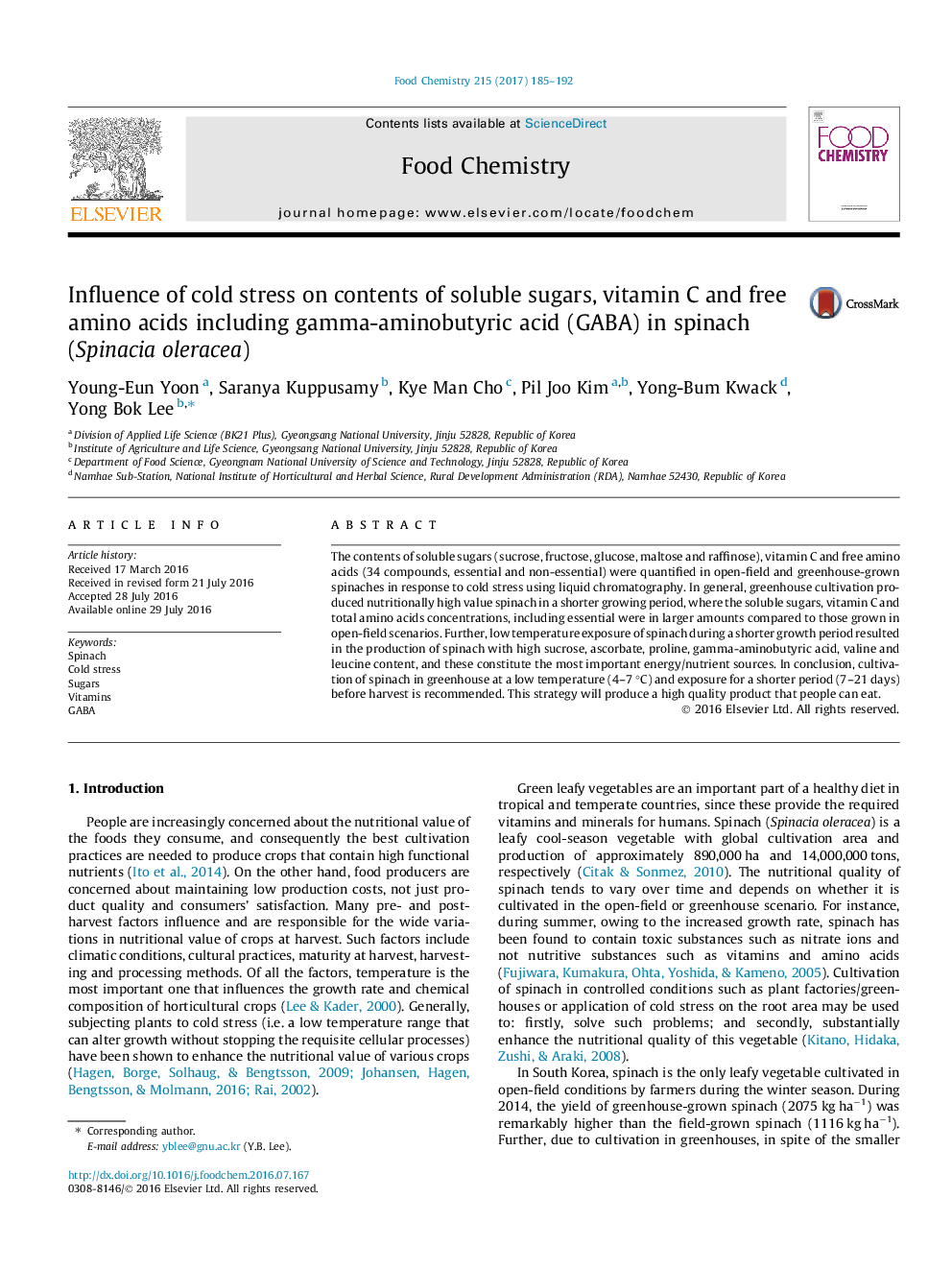| Article ID | Journal | Published Year | Pages | File Type |
|---|---|---|---|---|
| 1183722 | Food Chemistry | 2017 | 8 Pages |
•Nutritional quality of the field- and greenhouse-grown spinaches were compared.•Five soluble sugars, vitamin C and 34 free amino acids were analyzed by LC.•Cold stress enhanced the nutritional quality of the greenhouse-grown spinach.•Sucrose, vitamin C and GABA of nutritional value were high in greenhouse-grown spinach.•Spinach cultivated under conditions of cold stress for 7–21 days will produce a food of high quality.
The contents of soluble sugars (sucrose, fructose, glucose, maltose and raffinose), vitamin C and free amino acids (34 compounds, essential and non-essential) were quantified in open-field and greenhouse-grown spinaches in response to cold stress using liquid chromatography. In general, greenhouse cultivation produced nutritionally high value spinach in a shorter growing period, where the soluble sugars, vitamin C and total amino acids concentrations, including essential were in larger amounts compared to those grown in open-field scenarios. Further, low temperature exposure of spinach during a shorter growth period resulted in the production of spinach with high sucrose, ascorbate, proline, gamma-aminobutyric acid, valine and leucine content, and these constitute the most important energy/nutrient sources. In conclusion, cultivation of spinach in greenhouse at a low temperature (4–7 °C) and exposure for a shorter period (7–21 days) before harvest is recommended. This strategy will produce a high quality product that people can eat.
